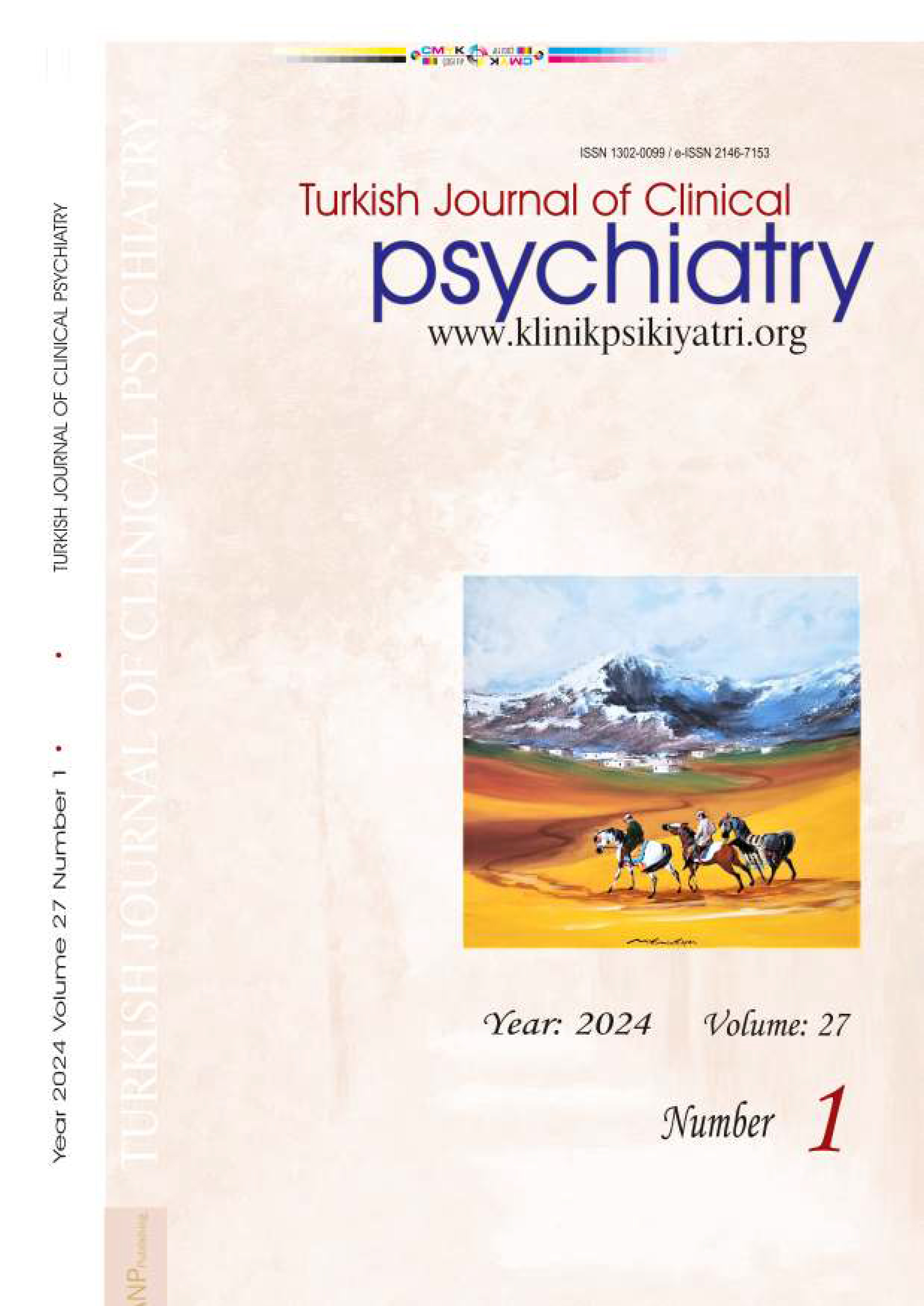
Neurobiology of Post Traumatic Stress Disorder: A Review
Işıl Göğcegöz Gül1, Gül Eryılmaz1Posttraumatic Stress Disorder (PTSD) is a syndrome characterised by symptoms of re-experiencing the traumatic event, avoidance-emotional numbness and hypervigilance symptoms that can develop after exposure to a traumatic event. PTSD has typically been used after the Vietnam War it has been involved in the DSM (Diagnostic and Statistical Manual of Mental Disorders) diagnostic system. Besides trauma's severity and duration; social, neuroendocrinologic and genetic factors effects developing PTSD. In order to understand the etiology of this disorder, there are continuous increases on the neurobiological, cognitive, behavioral and psychodynamic field studies. It is believed that many factors play a role in the etiology. Neuroendocrine system and the hypothalamuspituitary-
adrenal axis (HPA), neurotransmitter systems, neuroanatomical-neurophysiological models,opioid system, endocannabinoids and genetic risk factors are part of factors that are most focused on. The etiology of PTSD also play a role the multiple factors and for the a clearer understanding of this disorder is considered to be multidimensional and long process required further work. In this article, some of these factors,such as neuroendocrine system and HPA, neurotransmitter systems, neuroanatomical-neurophysiological models that play a role in the etiology of PTSD are reviewed.
Travma Sonrası Stres Bozukluğunun Nörobiyolojisi: Bir Gözden Geçirme
Işıl Göğcegöz Gül, Gül EryılmazÜsküdar Üniversitesitesi İstanbul Nöropsikiyatri Hastanesi, Psikiyatri, İstanbul, TürkiyeTravma Sonrası Stres Bozukluğu (TSSB), travmatik bir olaya maruz kaldıktan sonra ortaya çıkan, yeniden yaşantılama, kaçınma-küntleşme ve aşırı uyarılmışlık gibi özgül semptomlar ile kendini gösteren bir sendromdur. Bu yazıda; norepinefrin sistemleri, kortikotropin salgılayan hormon (CRF)-hipotalamik-hipofiz-adrenal korteks (HPA) sistemi ve diğer beyin sistemler gibi TSSB’nin gelişmesine neden olduğu düşünülen nörobiyolojik mekanizmalar literatür ışığında gözden geçirilmiştir.
Anahtar Kelimeler: Travma sonrası stres bozukluğu, nörobiyoloji, nöroanatomi, nöroendokrin sistemCorresponding Author: Işıl Göğcegöz Gül, Türkiye
Manuscript Language: Turkish
(3873 downloaded)




